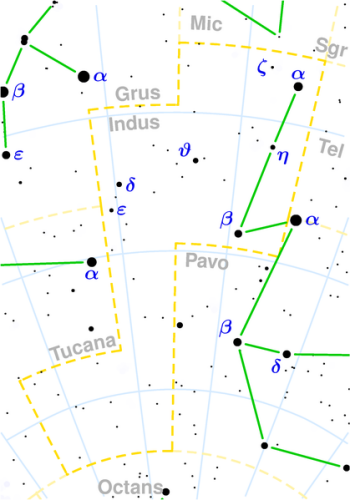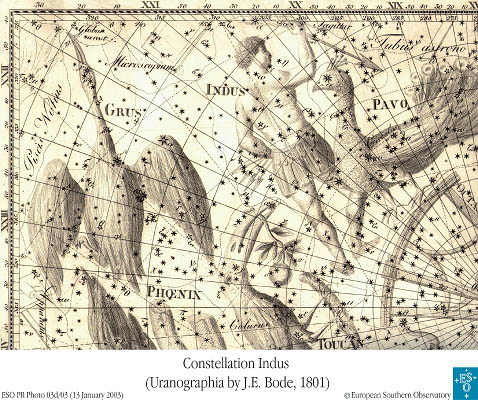Indus (original) (raw)

Indus. © 2003 Torsten Bronger.

Indus and its surroundings, as drawn in the famous Uranographia (published in 1801) of German astronomer Johann Elert Bode. This reproduction was made from original printing plates held by the library of the Astrophysical Institute Potsdam (Germany). The binary stellar system Epsilon Indi is associated with one of the arrows in the Indian's hand. Credit: ESA.
Indus (abbreviation: Ind), the Indian, is a faint southern constellation with very little of interest for the amateur astronomer. See below for details of the constellation's brightest stars.
Epsilon Indi is a nearby star around which have been found two brown dwarfs – the nearest known brown dwarfs to the Sun.
| Stars in Indus brighter than magnitude 4.0 | ||||||
|---|---|---|---|---|---|---|
| star | vis mag | abs mag | spec type | distance (ly) | RA (h m s) | Dec (° ' ") |
| Alpha (The Persian) | 3.11 | 0.65 | K0IIICN | 101 | 20 37 34 | -47 17 29 |
| Beta | 3.67 | -2.67 | K0III | 603 | 20 54 49 | -58 27 15 |

